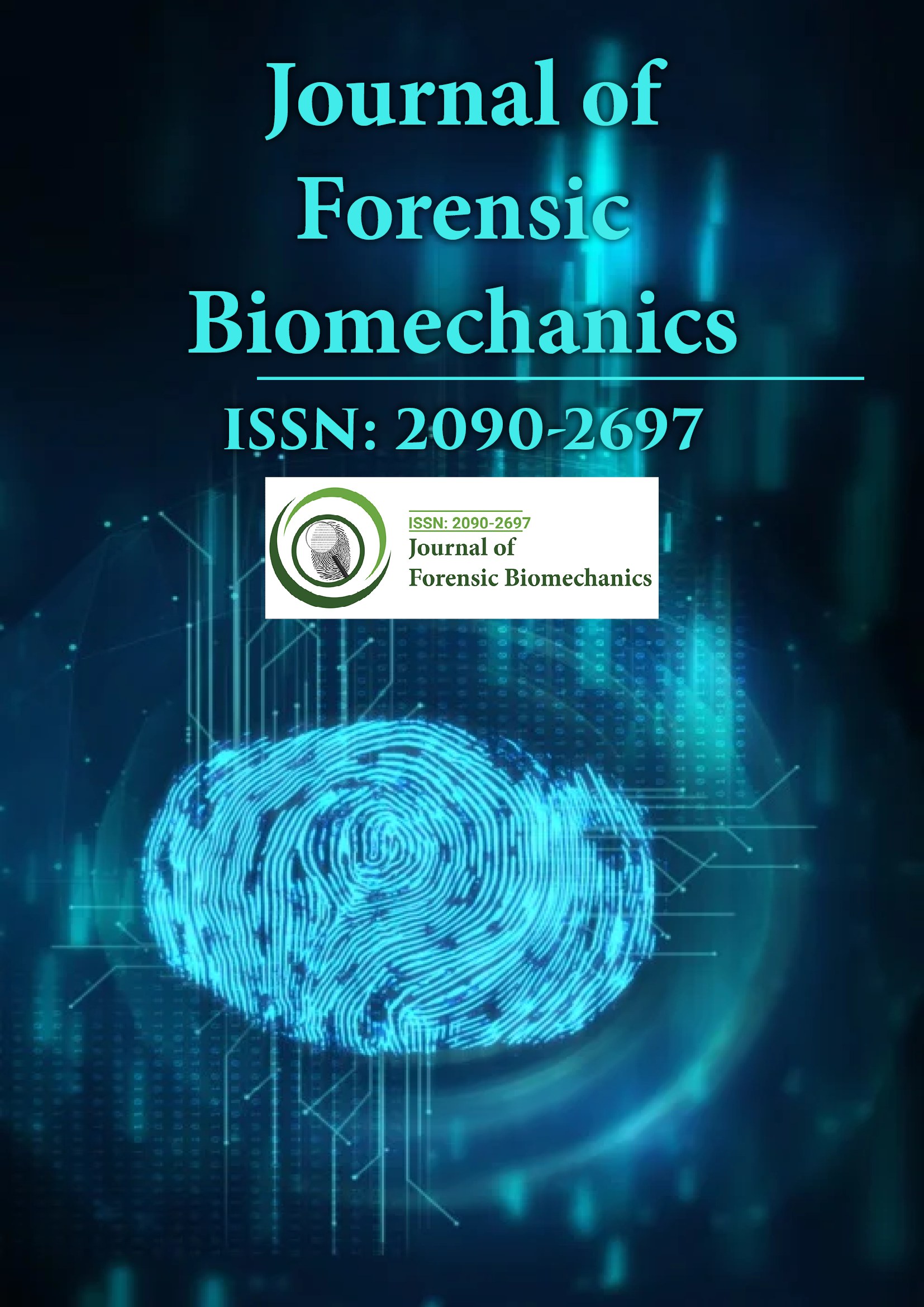Indexed In
- Genamics JournalSeek
- SafetyLit
- Ulrich's Periodicals Directory
- RefSeek
- Hamdard University
- EBSCO A-Z
- Geneva Foundation for Medical Education and Research
- Euro Pub
- Google Scholar
Useful Links
Share This Page
Journal Flyer

Open Access Journals
- Agri and Aquaculture
- Biochemistry
- Bioinformatics & Systems Biology
- Business & Management
- Chemistry
- Clinical Sciences
- Engineering
- Food & Nutrition
- General Science
- Genetics & Molecular Biology
- Immunology & Microbiology
- Medical Sciences
- Neuroscience & Psychology
- Nursing & Health Care
- Pharmaceutical Sciences
Opinion Article - (2024) Volume 15, Issue 2
Forensic Biomechanics of Cranial Fractures: Analysis and Case Studies
Christina Birthe*Received: 01-Jul-2024, Manuscript No. JFB-24-26585 ; Editor assigned: 04-Jul-2024, Pre QC No. JFB-24-26585 (PQ); Reviewed: 18-Jul-2024, QC No. JFB-24-26585 ; Revised: 25-Jul-2024, Manuscript No. JFB-24-26585 (R); Published: 01-Aug-2024, DOI: 10.35248/2090-2697.24.15.485
Description
Forensic biomechanics is a specialized field that applies principles of mechanical engineering and biology to understand injuries and trauma, particularly in legal contexts. One important area of forensic biomechanics is the analysis of cranial fractures, which can provide valuable insights into the circumstances surrounding traumatic events. This field combines knowledge from biomechanics, pathology, and forensic science to interpret and reconstruct the forces involved in cranial injuries.
Understanding cranial fractures
Cranial fractures occur when an external force exceeds the capacity of the skull to absorb or distribute that force. The skull, comprised of rigid bony structures and sutures, is designed to protect the brain from external impacts. However, in cases of severe trauma, the skull can fracture. These fractures can be categorized into different types based on their characteristics and the mechanisms of injury.
Linear fractures: These are straight, non-displaced fractures that typically occur due to direct impact. They are often seen in cases of blunt force trauma and can provide clues about the direction and point of impact.
Depressed fractures: Occurring when a portion of the skull is displaced inward, these fractures are often the result of a high- energy impact. They can cause damage to the underlying brain tissue and are typically associated with severe trauma.
Comminuted fractures: Characterized by the skull breaking into multiple fragments, comminuted fractures usually result from high-impact forces and are often seen in cases of severe violence or accidents.
Basal fractures: These occur at the base of the skull and are typically associated with significant trauma. They can be challenging to diagnose but are fundamental for understanding the extent of injury and potential complications.
Forensic biomechanical analysis
In forensic biomechanics, analyzing cranial fractures involves reconstructing the forces that caused the injury. This process typically includes:
Force estimation: Estimating the amount of force required to produce specific types of fractures. This involves understanding the mechanical properties of cranial bones and the energy absorption capabilities of the skull. Techniques such as Finite Element Analysis (FEA) can simulate impact scenarios and help estimate the forces involved.
Impact dynamics: Studying the dynamics of the impact, including the direction, velocity, and area of contact. This can be done using experimental setups with crash test dummies or computational models to simulate different scenarios.
Pattern analysis: Examining the patterns of fractures and their relation to the trauma. For instance, concentric and radial fracture patterns can indicate the nature and location of the impact.
Comparative analysis: Comparing the injuries to known cases or experimental data to draw conclusions about the force and impact involved. This can help in understanding the severity of the trauma and its implications for the victim.
Case studies in forensic biomechanics
Several case studies highlight the application of forensic biomechanics in understanding cranial fractures.
The impact of fall: A case involving a fall from a significant height demonstrated how linear and comminuted fractures could result from the impact. By analyzing the fracture patterns and estimating the fall height, forensic experts were able to reconstruct the fall scenario and determine the severity of the injuries.
Assault and blunt force trauma: In cases of assault where blunt force trauma was suspected, forensic biomechanical analysis revealed the impact dynamics that led to depressed fractures. By simulating the impact using biomechanical models, experts could determine the likely weapon used and the force applied.
Vehicular accidents: Analysis of cranial injuries in vehicular accidents often involves understanding the forces generated during collisions. By using crash test data and biomechanical simulations, forensic experts can estimate the impact forces and assess the likelihood of survival based on the injury patterns observed.
Citation: Birthe C (2024) Forensic Biomechanics of Cranial Fractures: Analysis and Case Studies. J Forensic Biomech. 15:485.
Copyright: © 2024 Birthe C. This is an open-access article distributed under the terms of the Creative Commons Attribution License, which permits unrestricted use, distribution, and reproduction in any medium, provided the original author and source are credited.

